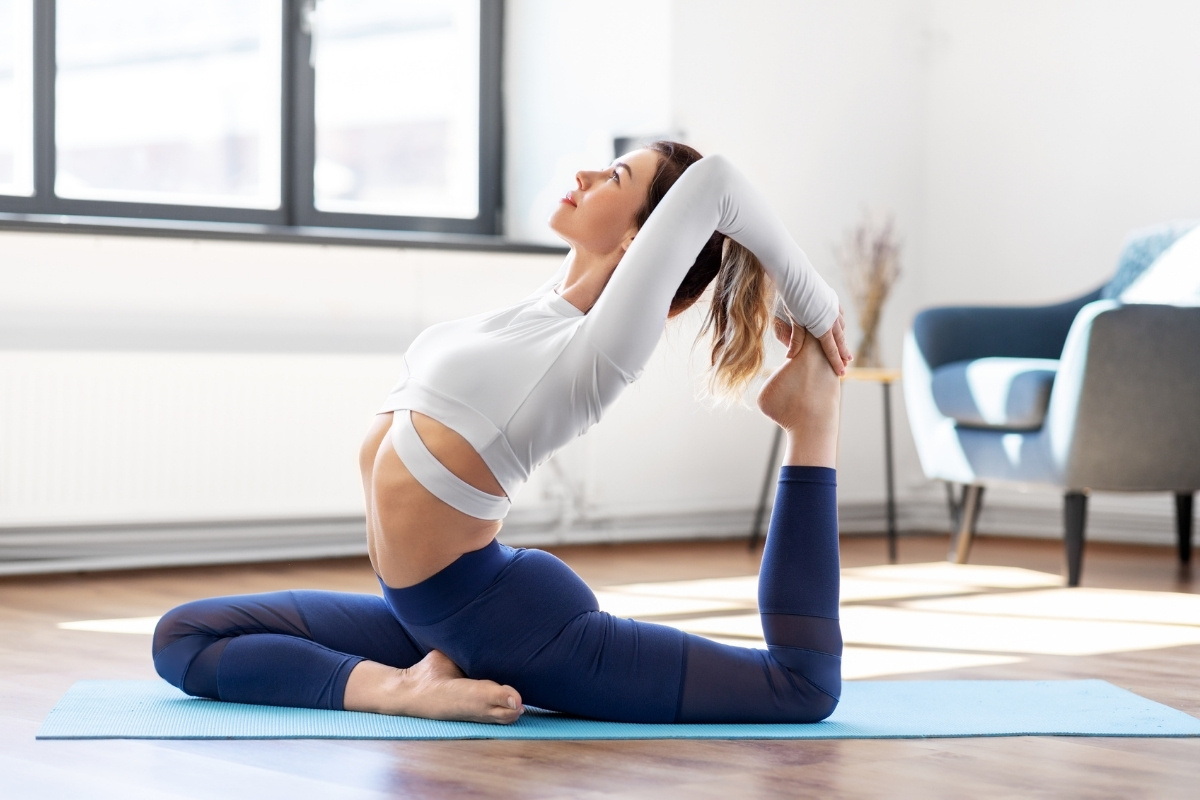Disclosure: This article contains affiliate links. As an Amazon Associate, TheFlowOps earns from qualifying purchases. This helps support our work at no additional cost to you.
Yoga is more than just a physical activity—it’s a path to mindfulness, balance, and personal growth. Whether you’re leading classes as a teacher or cultivating your own practice, finding the best yoga mat is essential.
It serves as your foundation, influencing everything from your comfort to your stability. With the abundance of options available, choosing the best one can feel overwhelming. This guide will help you navigate the key features for teaching and personal use.
1. Comfort and Cushioning
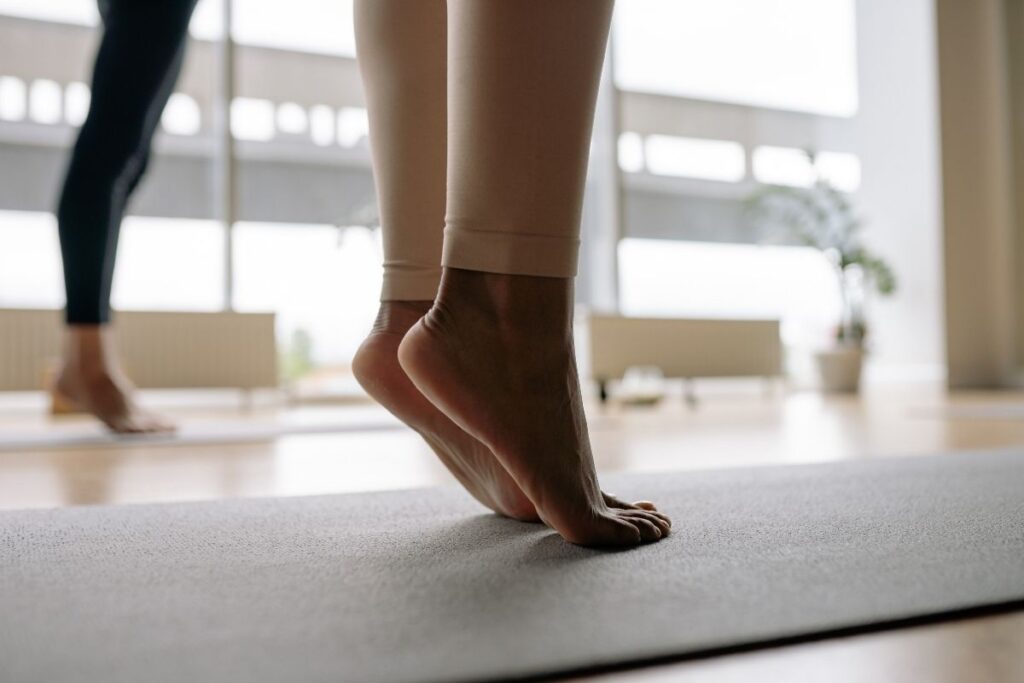
Yoga mats come in a range of thicknesses, and finding the right balance between comfort and stability is key.
While thicker mats offer more cushioning, especially for sensitive knees or prolonged seated postures, they can sometimes reduce balance during standing poses. High-density materials like natural rubber provide cushioning without compromising stability, making them ideal for various practices.
Interestingly, the thickness of the yoga mat can also impact its portability. Mats in the 4-6mm range strike a balance between comfort and ease of transport, which is particularly useful if you frequently move between studios or practice outdoors.
Manduka PRO Yoga Mat
Renowned for its dense cushioning, providing exceptional comfort during extended sessions. Manduka PRO Yoga Mat‘s closed-cell surface prevents sweat absorption, enhancing durability.
2. Grip and Traction
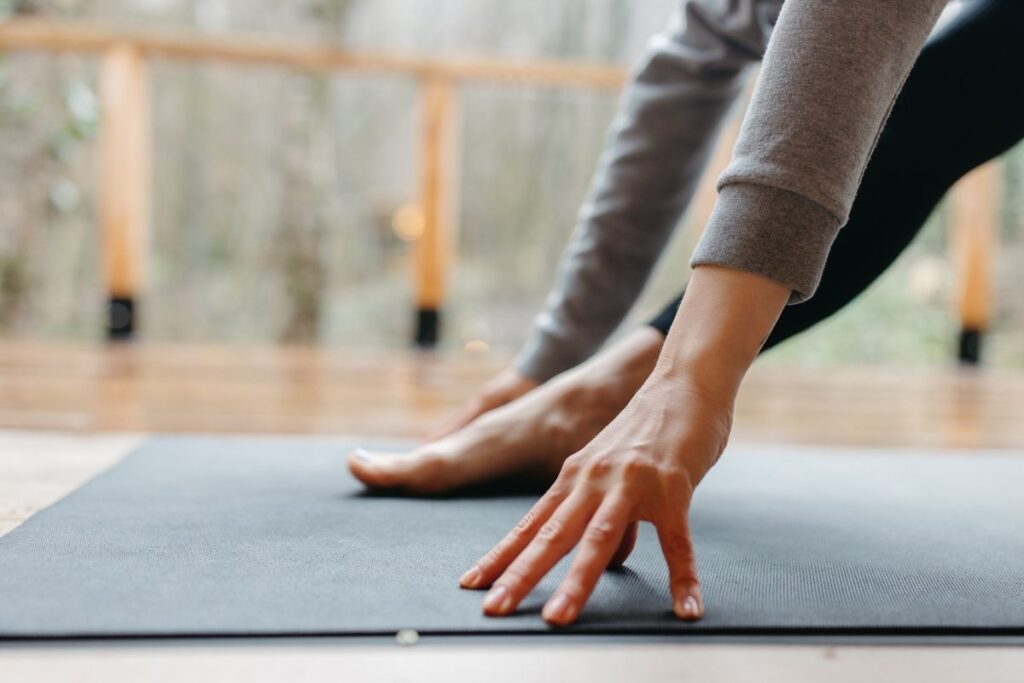
A yoga mat’s grip is essential for maintaining stability during poses, especially in practices like Vinyasa or hot yoga. Materials like polyurethane, natural rubber, and cork provide exceptional grip, ensuring you stay grounded even when sweat builds up.
One often-overlooked factor is that some mats, such as polyurethane-coated options, become even grippier when damp.
This makes them an excellent choice for high-intensity practices or warmer environments. Cork mats, on the other hand, not only offer a unique tactile experience but also resist bacteria and odors naturally, enhancing their longevity and cleanliness.
Jade Yoga Harmony Mat
Offers outstanding grip, ensuring stability even during intense or hot yoga sessions. Jade Yoga Harmony Mat is made from natural rubber, it provides a non-slip surface.
3. Durability and Maintenance
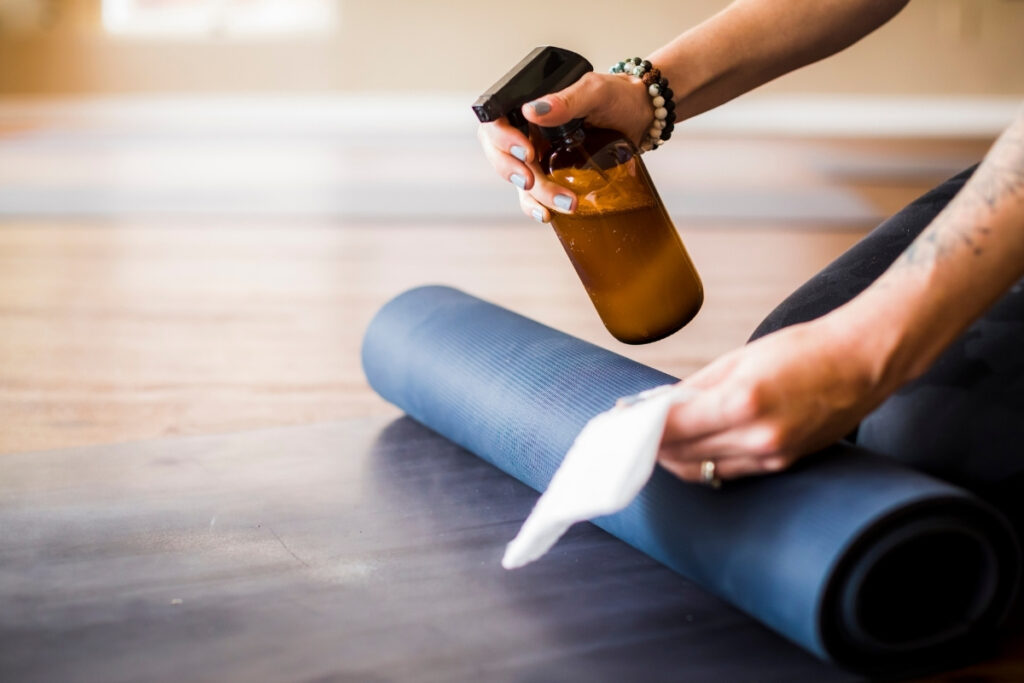
Durability is a critical factor, particularly for yoga teachers who use their mats extensively. Mats made from PVC or high-quality natural rubber tend to withstand frequent use better than lower-density materials. However, regular maintenance plays an equally important role in extending the life of your mat.
It’s worth noting that harsh cleaners can degrade the surface of even the most durable mats. Instead, using a natural cleaning solution—like water mixed with a few drops of essential oil—not only preserves the material but also keeps the mat smelling fresh.
For teachers who demonstrate poses daily or enthusiasts practicing multiple times a week, investing in a mat with a reputation for long-term durability, like Manduka’s PRO series, can save you money and hassle in the long run.
Gaiam Premium Thick Yoga Mat
Made with durable, high-density foam, the Gaiam Premium Thick Yoga Mat is built to withstand regular use while providing excellent cushioning for joints.
4. Portability and Weight
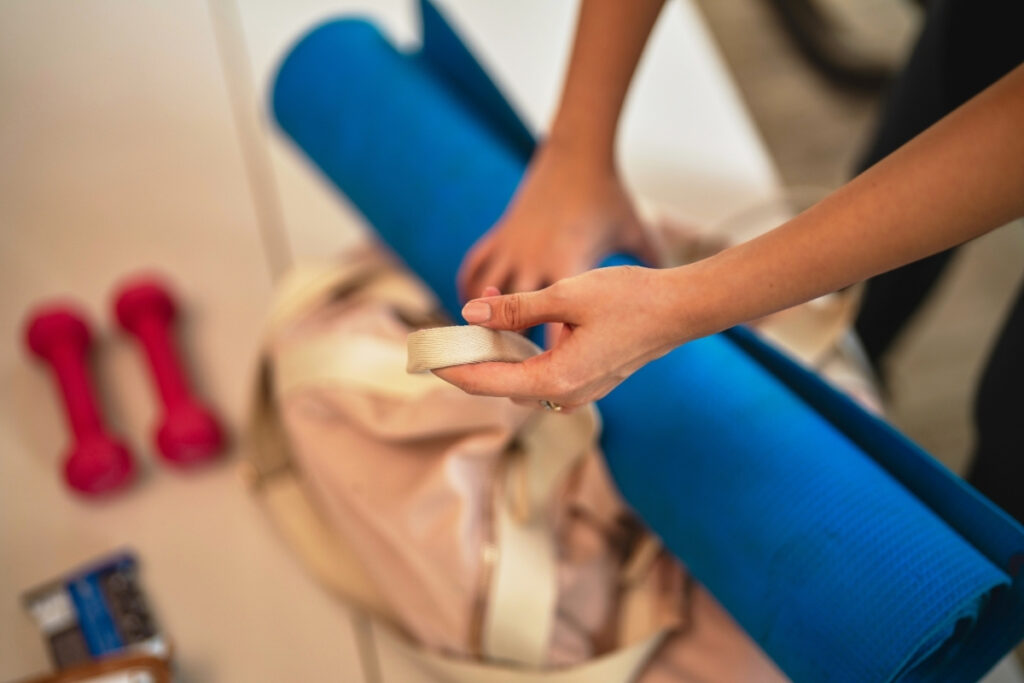
If you’re frequently on the move — taking classes form several different studios, or hosting yoga retreats, the weight and portability of your mat matter. Travel-friendly mats are typically thinner (around 1-2mm) and designed to fold or roll compactly. While these mats might lack cushioning, they’re perfect for pairing with studio-provided mats or for practices where weight reduction is a priority.
At-home practitioners or those teaching in a single location can prioritize comfort over portability. Heavier mats, such as those made from natural rubber or cork, provide excellent cushioning and durability, making them ideal for static setups. But if you prefer using these kinds of mats even when travelling, we suggest looking into yoga mat carriers for your convenience.
Manduka eKO SuperLite Travel Yoga Mat
Weighing about 2 pounds, the Manduka eKO SuperLite Travel Yoga Mat is highly portable and can be folded to fit into small bags, ideal for instructors on the move.
5. Sustainability and Eco-Friendliness
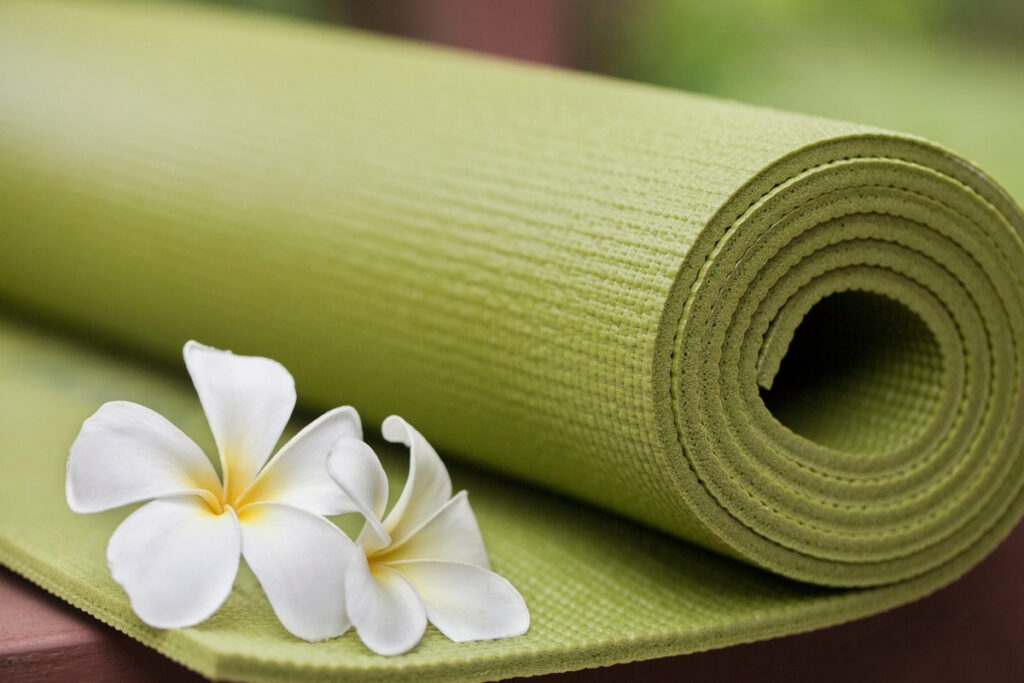
Yoga teaches us to live in harmony with the environment, so choosing an eco-friendly mat is a thoughtful way to reflect that philosophy. Materials like natural rubber, cork, or jute are great options because they’re biodegradable and kind to the planet.
Some mats, like those made from PVC, last a long time but aren’t great for the environment since they don’t break down naturally.
If you want to make an eco-conscious choice (check out sustainable yoga leggings, too), look for labels that say the mat is free of harmful chemicals or sustainably made. These mats usually would have certifications like OEKO-TEX or GOLS (Global Organic Latex Standard) in them. This ensures your mat is safe for both you and the planet while still performing well for your practice.
Jade Yoga Harmony Mat
Constructed from natural rubber tapped from rubber trees, and free from PVC and other synthetic materials, the Jade Yoga Harmony Mat is an eco-friendly choice.
6. Aesthetic and Energetic Appeal
The design and color of a yoga mat can influence your mindset and energy during practice. Cool tones like blue and green evoke a sense of calm, making them ideal for meditation or restorative practices. Conversely, warm tones like red or orange can energize and invigorate, complementing dynamic flows.
Additionally, some mats feature alignment markers or minimalist patterns that assist in refining posture and positioning. These subtle visual cues can enhance focus and precision, which is especially useful for teachers demonstrating poses or practitioners seeking to fine-tune their practice.
Alo Yoga Warrior Mat
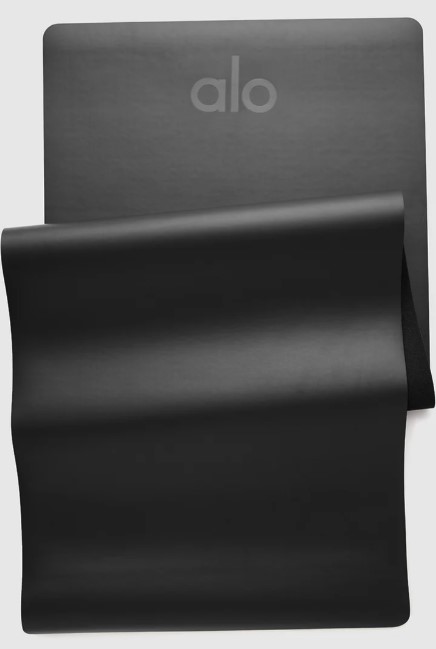
Features a sleek design with various color options, providing both functionality and aesthetic appeal. Its ample cushioning supports joints during practice
7. Long-Term Value
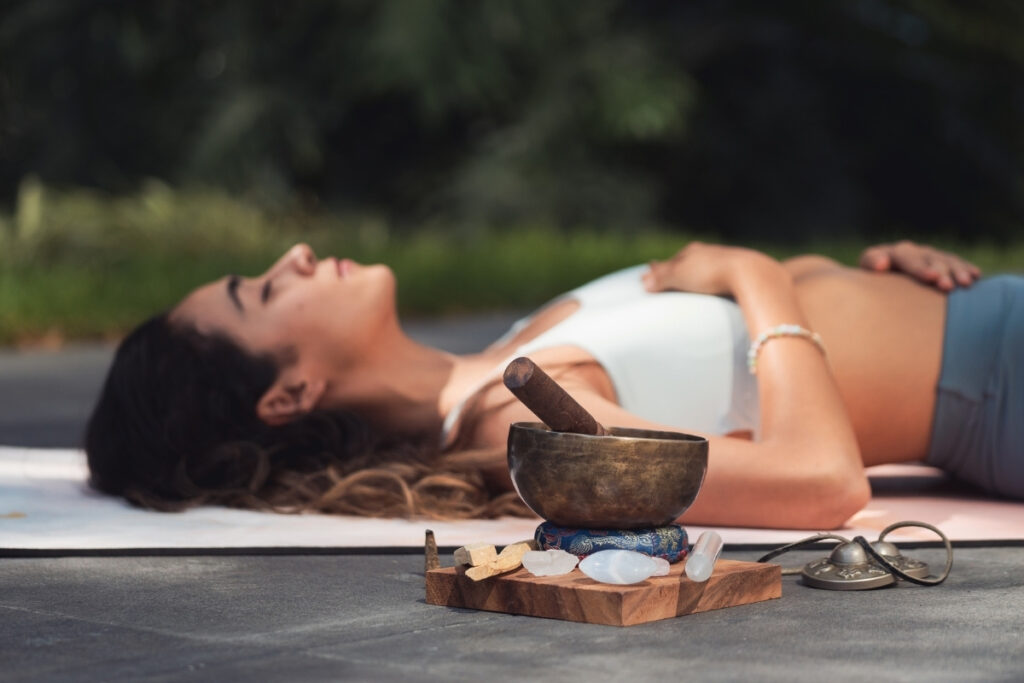
Investing in a high-quality yoga mat often pays off in terms of durability and performance. While premium options like Liforme or Manduka may have a higher upfront cost, they typically last much longer than cheaper alternatives, reducing the need for frequent replacements.
Mats made from materials like TPE (thermoplastic elastomers) offer a good middle ground for those practicing less frequently. These mats are affordable, lightweight, and easy to clean, making them a practical choice for beginners or occasional practitioners.
Manduka PRO Yoga Mat
Though priced higher, Manduka PRO Yoga Mat‘s durability and lifetime warranty offer excellent long-term value, making it a worthwhile investment for serious practitioners.
8. Personal Fit and Compatibility
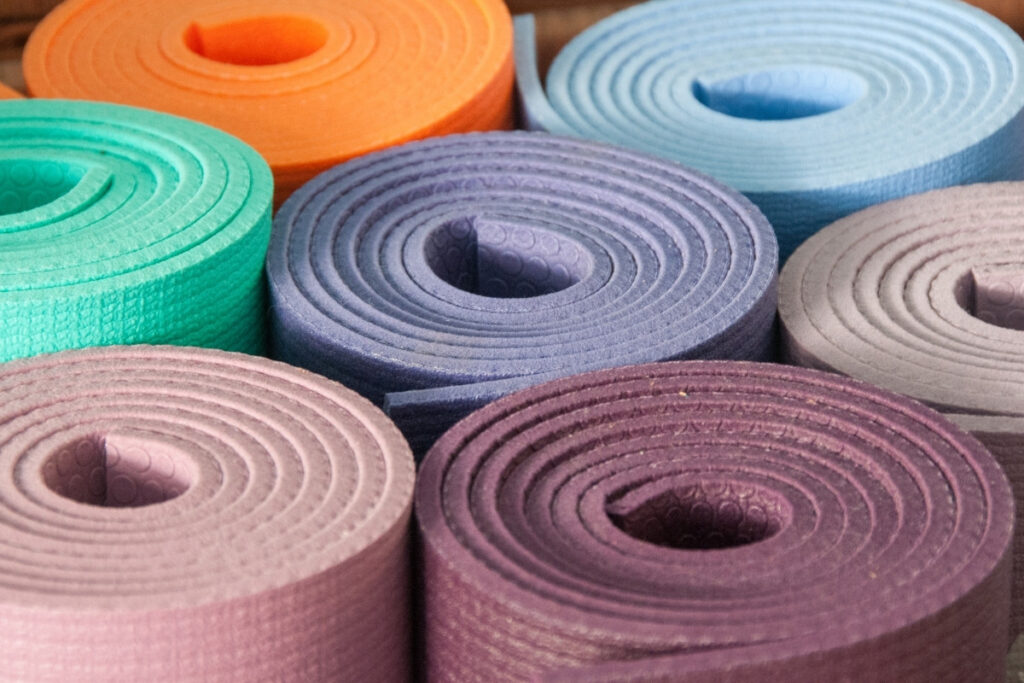
Trying out a mat before committing to it can make a significant difference. Personal factors such as sweat levels, body chemistry, and practice style all influence how a mat feels and performs. Some materials react differently depending on these variables; for instance, certain types of rubber may feel sticky to some but slippery to others.
Whenever possible, visit a store or studio to test mats in real-world conditions. Rolling through a few poses on different surfaces can reveal whether a mat aligns with your comfort, grip, and aesthetic preferences.
Liforme Yoga Mat
Equipped with alignment markers, Liforme Yoga Mat aids in proper positioning, enhancing personal compatibility and practice effectiveness.
Find the Best Yoga Mat for You
The right yoga mat is more than just a tool—it’s a partner in your yoga teaching journey, supporting every pose, breath, and intention. By considering factors like comfort, grip, durability, and sustainability, you can find a mat that enhances your practice and reflects your commitment to mindfulness and growth.
To ensure your yoga mat stays in top condition, explore our guide on how to clean a yoga mat, and don’t miss our recommendations for essential yoga props and versatile yoga accessories to elevate your practice and classes.
Whether you’re guiding a class or flowing solo, the ideal mat helps you feel grounded and supported, allowing you to focus fully on your practice. Choosing the right one isn’t just about function—it’s about creating a space where you can thrive.
Planning a retreat? Build your custom retreat website today and help your attendees find their perfect mat for an unforgettable experience!

